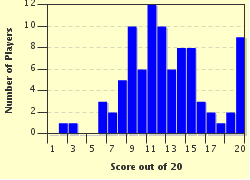Quiz Answer Key and Fun Facts
1. What was the de Havilland number designation for the Mosquito?
2. Where was the Mosquito designed?
3. What was the Mosquito's nickname?
4. The Mosquito performed a wide variety of roles. Which role did it NOT serve in the RAF during World War 2?
5. What notable first did bomber versions of the Mosquito achieve on the 31st of January 1943?
6. Is the prototype of the first Mosquito still in existence?
7. What type of aerial warfare did Mosquito fighter-bomber crews help pioneer?
8. What main gun did the "Tsetse" variant of the Mosquito carry?
9. Which German officer is quoted as saying this of the Mosquito, "I turn green and yellow with envy. The British, who can afford aluminium better than we can, knock together a beautiful wooden aircraft that every piano factory over there is building, and they give it a speed which they have now increased yet again"?
10. What was the Mosquito's main weakness when operating in tropical conditions?
11. How did Pathfinder Mosquitos help RAF Bomber Command during the later stages of World War 2?
12. Did the Mosquito see service with a civil airline during World War 2?
13. Which was NOT a famous air raid carried out by Mosquito squadrons during World War 2?
14. What did the USAAF do when equipped with photo-reconnaissance versions of the Mosquito?
15. Which famous RAF pilot died when flying a Mosquito over Holland in 1944?
16. Did Germany try to build its own version of the Mosquito during World War 2?
17. How many "kills" were Luftwaffe pilots able to claim if they shot down a Mosquito?
18. What was the name of the Mosquito's successor?
19. When did the RAF finally retire its last Mosquito aircraft?
20. Are there any airworthy Mosquito variants capable of flight?
Source: Author
mcsurfie
This quiz was reviewed by FunTrivia editor
bloomsby before going online.
Any errors found in FunTrivia content are routinely corrected through our feedback system.


